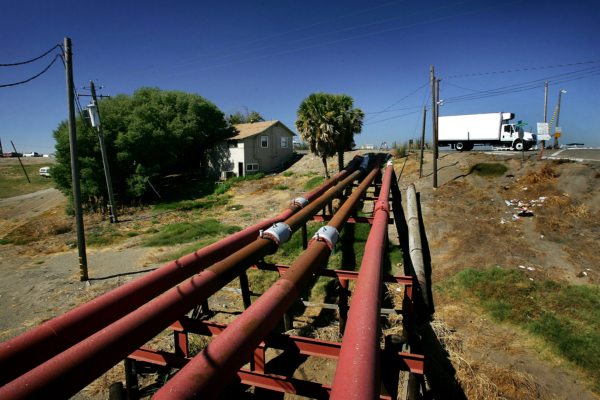Thanks to two consecutive years of abundant rainfall and the abundant snowpack in the Sierra Nevada, farmers in the Central Valley of California are confident about the irrigation water supply for their crops this summer.
For Californians involved in agriculture, this is good news, especially after experiencing intermittent droughts over the past few years. An expert from the University of Utah said that in terms of the snowpack in the Sierra Nevada, the 2024 rainy season brought “surprisingly average levels.”
The melting snowpack from the Sierra Nevada flows into the Kings River and Pine Flat Dam, providing water sources for the Central Valley.
According to data from the California Water Science Center, the 400-mile-long valley in California grows over 250 types of crops, providing 40% of the fruits and nuts in the United States.
The key to agricultural success in the region is water resources. In 2024, after two years of heavy rain and floods, the local water supply began to recover, but it remains unclear if it is enough to meet the water needs of the community and agriculture.
Laura Ramos, director of the California Water Institute (CWI), said that “drought” is a term most experts hope Californians will stop using because it has “strong regional specificity.”
The institute, funded by Fresno State University, focuses on studying water supply challenges in the valley and finding possible solutions.
Ramos pointed out that the issue is not whether California will have enough “wet” years or “normal” water cycles to meet the needs of communities and farmers, but sustainable water resource management depends on infrastructure development.
She explained that in 2023, the atmospheric river brought record rainfall and floods to California, but there was nowhere to store the excess water.
Groundwater basins provide about 40% of the water for farms and communities across California. Before the Sustainable Groundwater Management Act (SGMA) was passed in 2014, the use of groundwater was largely unregulated.
Currently, managing agencies are responsible for overseeing the basins throughout the valley, especially in the southern part of the Central Valley, which has reportedly been greatly over-extracting up to 2 million acre-feet of groundwater.
Despite efforts by the state government, water storage remains a challenging issue.
Preparing for drought and water resource transport are common concerns among valley farmers, including Mike Strambi, a third-generation farmer and small business owner in the Central Valley.
Strambi believes that the problem lies in sustainable groundwater management organizations responsible for measuring the evapotranspiration rate of farmland. If water evaporates from the fields, water districts can charge farmers for it.
He advocates for long-term solutions to manage California’s water resources by protecting them and setting limits on deep well drilling. Overuse and deep drilling over the years have caused many aquifers to collapse, reducing the state’s long-term water storage potential.
Strambi criticized large corporations with water rights that can sell water resources to major cities like Los Angeles, stating that “water resources should not be for profit.” He suggests starting from scratch in the valley and focusing on reasonable water storage methods.
Even after two wet rainy seasons and a hot summer in California, will farmers have enough water to sustain their crops until the end of the planting season? Strambi is confident, saying, “We will be fine.”
He mentioned that Pine Flat Lake, located about 30 miles from Fresno, has a water storage capacity of over 90% this year, which is enough to support local farmers throughout the summer.

